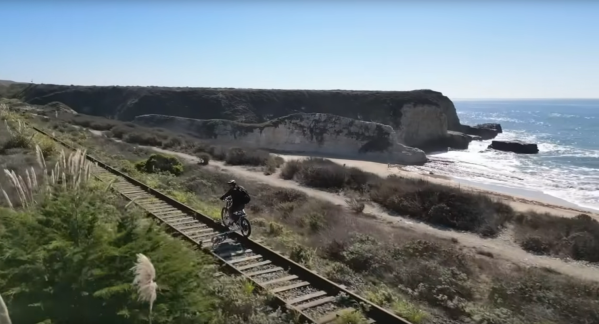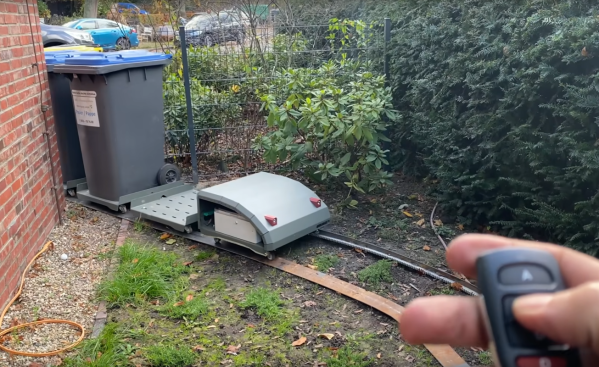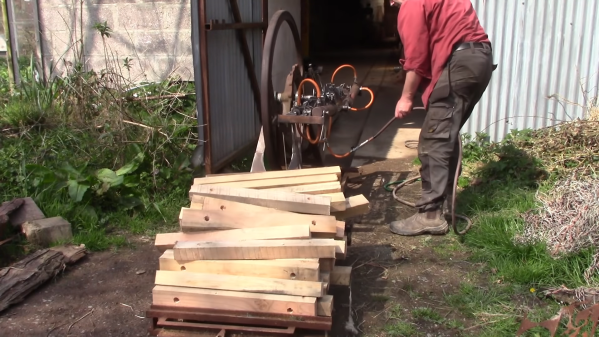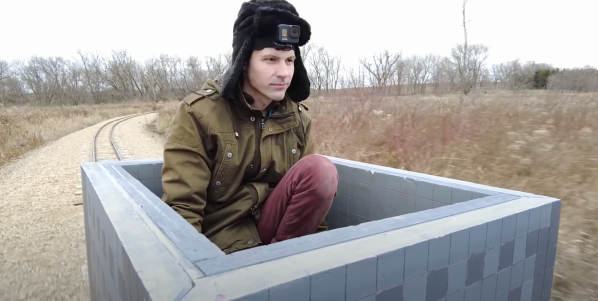[Joel] of Joel Creates loves trains and Minecraft. So what better way to combine them than to make a real-life electric mine cart and ride it around?
At first glance, it seems pretty straightforward. Four wheels, each with a flange, mounted to a box with a motor. In practice, it was a little more complex than that. Just finding a spot of track to even ride on is tricky. Most “abandoned” tracks that you might see around your city often aren’t all that abandoned. Luckily for [Joel], he remembered an amusement park in the area that he went to as a kid, which he remembered having a decent amount of track. Additionally, the rails were smaller and closer to the scale of a real Minecraft track where one block is 1 meter. After calling up the owner and receiving permission, Joel began to build his cart.
First attempts to procure actual train wheels were foiled by cost and lead times, and simply CNCing a set of wheels was too expensive from a time and materials point of view. [Joel]’s first thought was about making an assembly out of two wheels to grip the rail, much like a roller coaster. However, there were dozens of switch points on the track at the park and several road crossings, both things that wouldn’t work with that sort of setup. Stumbling upon a bit of hacker inspiration, [Joel] turned to brake drums, which happen to be reasonably close to the correct size. They also have the superb quality of being relatively cheap and available. Almost all the parts were CNCed out of aluminum, plywood, or foam.
Given that the theme of the build was doing things to scale, [Joel] was mindful of the top speed of a minecart in the game, which is 8 meters per second or roughly 25 miles per hour, so he set that as his goal to hit. A beefy motor from an online warehouse and a lithium-ion pack allowed him to hit that easily; it was just a matter of doing so safely.
If you need even more Minecraft vehicles in your life, perhaps an RC boat might do the trick? Video after the break.
Continue reading “This Little Minecraft Mine Cart Of Mine” →


















